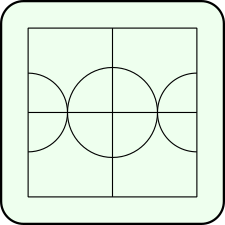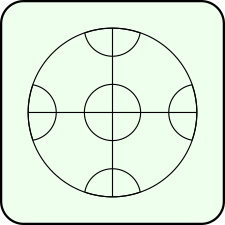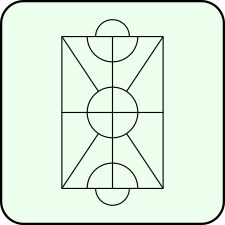
Bear games is a category of board games of which many have historical roots in the Roman Empire. They were played in parts of the Empire as far away as Turkey and France and are still played today, especially in Italy. All of the games are two-player abstract strategy board games. Normally, the game is played with three hunters and one bear on a patterned board. It bears similarity to the hunt games such as the fox games, rimau-rimau, and bagha-chall, however, there are no captures involved. The three hunters are trying to hem in the bear, and block its movements.
Contents
The closest relative of the Bear games are the Hare games. In this case, the hounds are the "hunters", and there are three of them which is the same number of hunters in the Bear games. The difference is that the hounds cannot move backwards in any way, whereas, the hunters can move in any direction. As a result, the boards used are also different. Another close relative is the game called watermelon chess. In one of the bear game variants, the board is the same as that of watermelon chess. Furthermore, the game sz'kwa also uses the same board, although it is not actually related to the bear games since the rules and game play are completely different.







